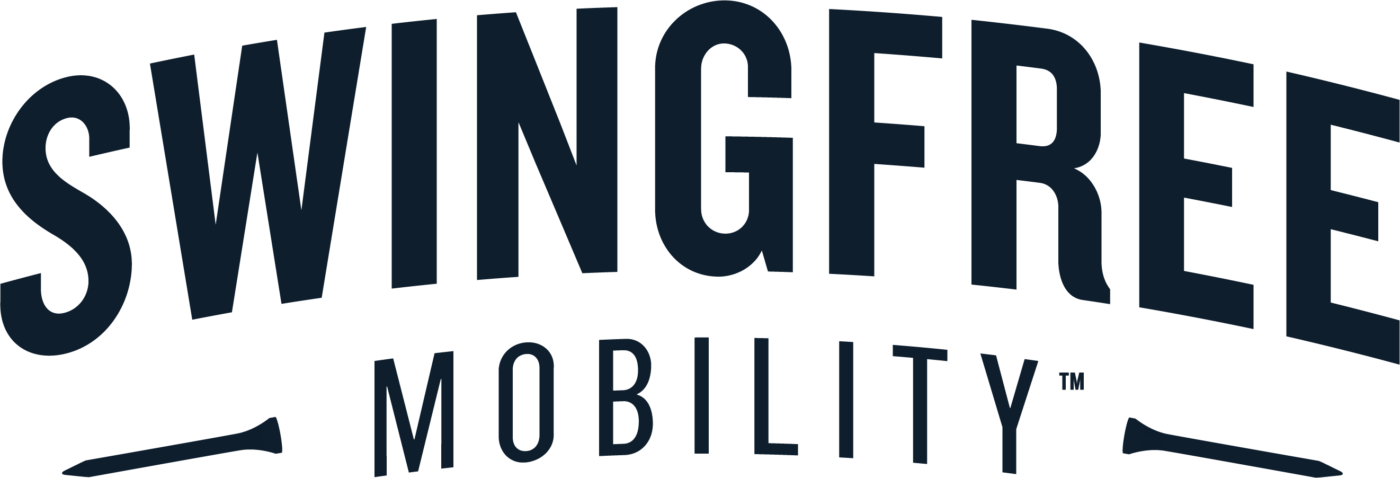Have you ever felt like your swing hits a wall before you are even ready? Are you burdened by the constant pain that accompanies every powerful swing on the tee? If you have been struggling with muscle recovery and remedies to get the best swing on your golf course, you are not alone.
When it comes to delivering your best shot, mobility and recovery may be your biggest allies in delivering a powerful, fluid, and effortless swing. By tuning into more golf-specific mobility exercises, you can swing with more width, control, and comfort. This means fewer injuries and faster muscle recovery for more powerful rounds.
This guide explores some effective mobility exercises that will improve your range of motion, allowing your muscles to recover from fatigue and soreness, for a smarter, targeted mobility.
The Link Between Flexibility, Range of Motion, and a Powerful Golf Swing
Golf swing flexibility is crucial for a flexible, agile, and fluid swing on the course. If your golf swing feels restricted with a narrow arc, your lack of muscle recovery, and stiff shoulders are often the hidden culprits. Tight hips, a stiff upper back, or tight shoulders can limit your range of motion and make your swing less powerful and less accurate.

SwingFree Mobility, your ultimate partner in muscle recovery, offers scientifically backed products and the best golf recovery creams designed to enhance your range of motion and flexibility, accelerating golf recovery and preventing injuries. Combining golf swing flexibility exercises with SwingFree Mobility massage creams can help you move more effectively on the course, resulting in more consistent swings. [1]
Self-Assessment Routines to Assess Range of Motion
Self-assessment routines for range of motion (ROM) can help a golf player understand where his mobility stands and where to focus the training for faster muscle recovery. Start with simple, repeatable tests for hips, thoracic spine, shoulders, and hamstrings—things you can easily do at home. A basic ROM check may include hip hinge depth, thoracic rotation, and shoulder overhead reach. Always use a gentle, pain-free range and products such as SwingFree Mobility products, and document your findings with quick notes. This will allow you to assess your mobility and flexibility on the course, paving the way for improvement and muscle recovery for pain-free rounds.

Sectioned Mobility Drills to Improve Range of Motion
If you are a golfer looking for easy drills and solutions for faster muscle recovery, these sectioned mobility drills may just be the answer to your quest for a powerful swing. [2]
| Zone | Drills | Purpose/ Focus | Exercise | Recommended Reps (per session) |
| Hips and Pelvis | Hip hinge mobilization, 90/90 stretches, dynamic leg swings | Improve hip rotation, pelvis control, and swing turn width | Maintain pelvis stability, hinge from the hips, and swing through the full range | 8-12 reps per drill, 2-3 sets |
| Thoracic Spine and Chest | Thoracic rotations, wall angles | Increase thoracic mobility to improve spine rotation and posture | Keep hips steady, rotate from mid-back, and extend through the thoracic spine | 8-12 reps or 10-15 rotations, 2-3 sets |
| Shoulders and Arms | Shoulder circles, doorway pec stretch, band pull-aparts | Normalize shoulder girdle movement, open chest, and build scapular control | Smooth circles, gentle doorway stretch, pull apart bands with scapular engagement | 10-15 reps or 8-12 pulls, 2-3 sets |
| Ankles and Feet | Ankle dorsiflexion and plantarflexion, calf stretches, and balance drills | Enhance foot-to-ground stability and ankle range of motion for more weight transfer | Drive heel down, flex, and extend | 8-12 reps or 30-60 seconds per stretch, 2-3 sets |
| Core and Spine Stability | Pallof press, side plank with reach, anti-rotation basics | Build anti-rotation strength and trunk stability to support a controlled swing | Brace core, press evenly, maintain spine alignment | Pallof press 8-12 reps each side, 2-3 sets, side planks 20-40 seconds each side |
Reducing Injury and Initiating Muscle Recovery
Kickstarting muscle recovery for reducing injury goes hand in hand with smart exercises and rest. A consistent warm-up routine and the use of SwingFree WarmUp Drive, the best golf muscle cream, prime your joints and muscles for golf-specific demand. Here are some muscle recovery methods to improve your performance on the course:
-
Post-Round Cooldown and Static Stretching Routine
A cool-down session after a hectic golf round helps your body recover faster and reduce soreness. Aim for lowering your heart rate with light walking or easy cycling for 3-5 minutes, then target key muscle groups such as hips, glutes, hamstrings, back, shoulders, and calves. Hold each stretch for 20-40 seconds, breathing deeply without bouncing. Finish with SwingFree’s CoolDown Caddie, a formula designed to soothe soreness and reduce swelling for a pain-free round. [3]

-
Soft-Tissue Work for Golfers
Soft-tissue exercise for golfers helps unlock smoother swings and initiates faster muscle recovery by addressing muscle tension, adhesions, and myofascial restrictions. Techniques such as foam-rolling, cross-friction, and targeted massage can alleviate tight hips and shoulders, promoting blood flow to key muscles.
Integrate brief sessions pre- and post-rounds, focusing on areas that feel tight and restricted. Pair with mindful breathing and gentle stretches to enhance tissue length. Finally, use SwingFree Mobility’s EagleEase, a mild-intensity massage cream, before stretching for optimal recovery and muscle repair. [4]

-
Hydration, Nutrition, and Sleep Consideration for Supporting Golf Recovery
Proper hydration, a balanced diet, and adequate sleep are the pillars of muscle recovery for golfers. Rehydrate and refuel with water or electrolytes after workouts and rounds to prevent muscle cramping. Add balanced meals in your diet—lean protein, complex carbs, healthy fats, and anti-inflammatory fruits—to support muscle repair and energy. More importantly, prioritize sleep by aiming for 7-9 hours to optimize tissue healing and minimize late caffeine intake before bed. [5]

Conclusion
Golf swing flexibility comes not only from mobility exercises that increase your range of motion, but it is also dependent on muscle recovery routines, rest, and proper nutrition. By following an integrated, balanced approach to increase flexibility and using SwingFree’s scientifically backed products, you can improve mobility and consistency for powerful, fluid rounds of golf.
FAQs
How to improve the range of motion for the golf swing?
To improve golf swing ROM, follow targeted mobility drills for hips, thoracic spine, shoulders, ankles, and core, focusing on controlled ranges. Pair with consistent warm-ups, proper technique, and adequate recovery to maintain flexibility.
What improves your range of motion and prevents injuries?
The two pillars for improving range of motion are consistent, targeted mobility work for the thoracic spine, shoulders, and ankles, and robust recovery habits—proper warmups, hydration, nutrition, sleep, and injury-preventive measures such as mindful movement.
How to improve golf swing flexibility?
Incorporate targeted mobility drills for the thoracic spine, hips, shoulders, and ankles with gradual, controlled ranges, paired with consistent use of SwingFree products, and a golf-specific warm-up.
Which type of exercise helps to improve flexibility and range of motion?
A combination of dynamic mobility drills and static stretches works best, along with targeted soft-tissue work and mobility-strength exercises to build range of motion steadily.
References:
[1] https://x.com/SwingFree_Golf
[2] https://www.instagram.com/swingfreemobility/
[3] https://www.tiktok.com/@swingfreemobility

